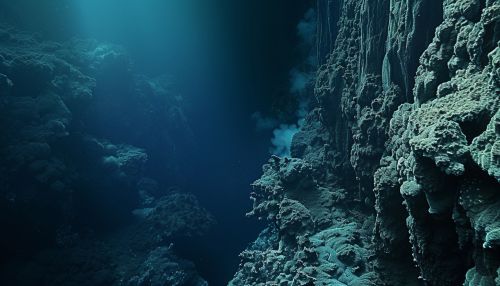Hyperthermophiles
Introduction
Hyperthermophiles are a type of extremophile that thrive in extremely hot environments. These organisms are a part of the archaea domain, although some bacteria and eukaryotes can also be classified as hyperthermophiles. They are known for their ability to survive in conditions that are lethal for most life forms, such as deep-sea hydrothermal vents and hot springs.


Characteristics
Hyperthermophiles are characterized by their ability to survive and reproduce at temperatures above 80°C (176°F), with some species able to withstand temperatures above 100°C (212°F). This is significantly higher than the optimal growth temperature for most organisms, which is typically around 37°C (98.6°F). The highest recorded temperature at which a hyperthermophile has been able to grow is 122°C (251.6°F), a record held by the archaeon Strain 121.
Adaptations
Hyperthermophiles have developed a number of adaptations that allow them to survive in such extreme conditions. These include modifications to their cellular membranes, proteins, and DNA.
Cellular Membranes
The cellular membranes of hyperthermophiles are composed of unique lipids that are more stable at high temperatures. These lipids often have ether bonds instead of ester bonds, which are more common in other organisms. The ether bonds are more resistant to heat, helping to maintain the integrity of the cell membrane.
Proteins
The proteins in hyperthermophiles are also adapted to function at high temperatures. These adaptations include an increased number of ionic bonds, which help to stabilize the protein structure, and a decreased number of hydrophobic amino acids, which tend to destabilize proteins at high temperatures.
DNA
Hyperthermophiles have also developed mechanisms to protect their DNA from damage caused by high temperatures. These include the use of DNA repair enzymes and the production of protective proteins that bind to the DNA and prevent it from denaturing.
Habitats
Hyperthermophiles are found in a variety of extreme environments around the world. These include deep-sea hydrothermal vents, hot springs, geysers, and volcanic areas. Some hyperthermophiles have also been found in man-made environments, such as industrial waste and hot water systems.
Applications
Due to their unique adaptations, hyperthermophiles have a number of potential applications in various fields. These include biotechnology, where their heat-stable enzymes can be used in industrial processes, and astrobiology, where they can provide insights into the potential for life on other planets.
